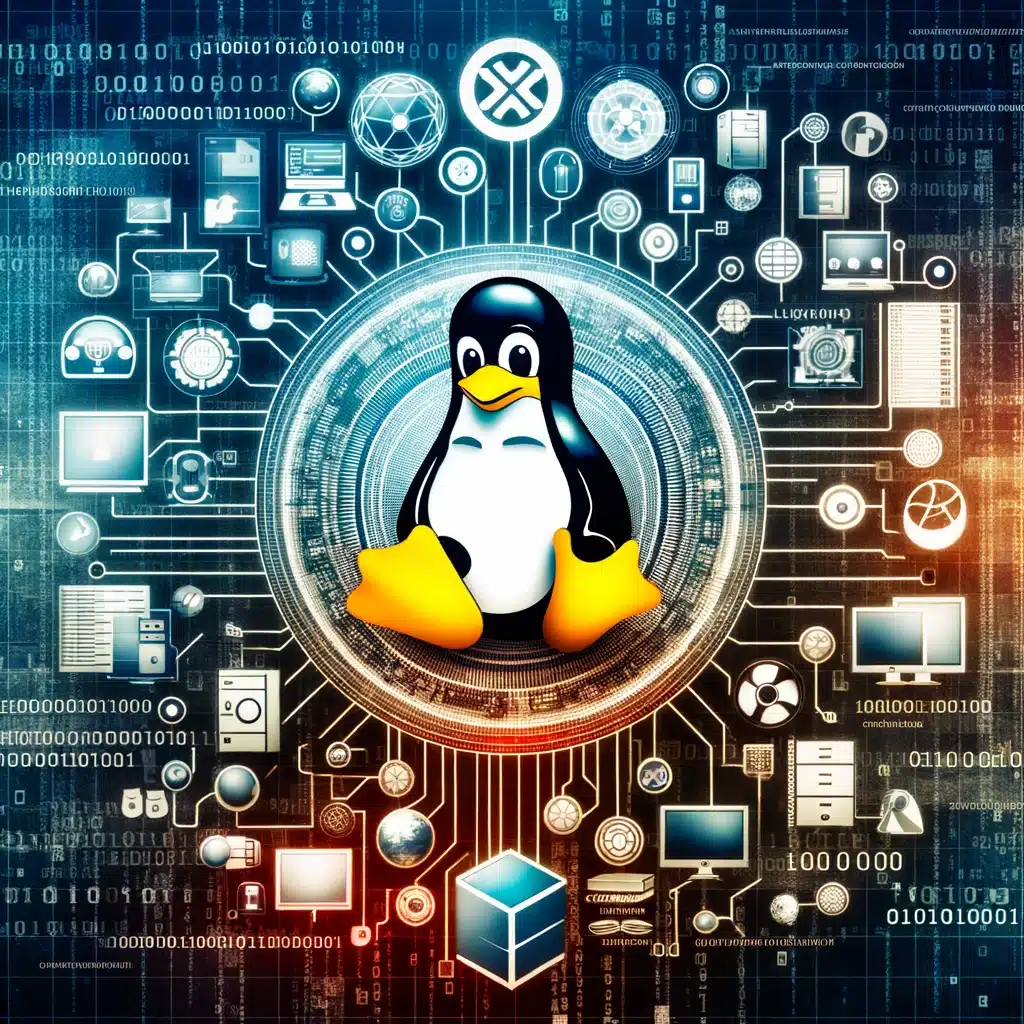
FAQ: What Are the Fundamentals and Differences Between Linux and Unix Operating Systems?
FAQ
Approx read time: 9 min.
What Are the Fundamentals and Differences Between Linux and Unix Operating Systems?
Linux and Unix are two significant operating systems that have had a profound impact on the computing world. Both share a philosophy of providing powerful, reliable, and flexible systems for users ranging from personal computing to enterprise-level servers. Understanding these systems requires a dive into their history, architecture, operating principles, and their differences. Let’s embark on this detailed exploration.
History and Evolution – What Are the Fundamentals and Differences Between Linux and Unix Operating Systems?
Unix:
- Origins: Unix began in the late 1960s at AT&T’s Bell Labs. The initial development was led by Ken Thompson, Dennis Ritchie, and others. It was designed to be a portable, multi-tasking, and multi-user system in an era of mainframes.
- Development: Over the years, Unix evolved through various versions and branches, including System V, BSD (Berkeley Software Distribution), and others, spreading widely in academic and commercial settings.
- Origins: Linux was created in 1991 by Linus Torvalds, a Finnish student who sought to develop a free operating system kernel. The name “Linux” comes from the Linux kernel, around which various distributions have been built.
- Growth: Linux has grown to become one of the world’s most popular operating systems, powering everything from desktops to the majority of the internet’s servers and supercomputers.
Architecture and Design – What Are the Fundamentals and Differences Between Linux and Unix Operating Systems?
Kernel:
- The kernel is the core of any operating system. It manages the system’s resources, including the communication between hardware and software components.
- Unix kernels vary by distribution (e.g., Solaris, FreeBSD) but share common traits in their design and functionality.
- Linux uses a monolithic kernel, which means it includes all necessary drivers within the kernel space, providing high efficiency and performance.
Shell:
- The shell is the interface between the user and the kernel, allowing users to execute commands. Both Unix and Linux support multiple shells (e.g., Bourne Shell, Bash, C Shell).
File System:
- Both systems use a hierarchical file system structure with a single root directory (“/”) from which all other directories branch.
- Filesystem standards like the Filesystem Hierarchy Standard (FHS) provide consistency across Linux distributions.
Operating Principles – What Are the Fundamentals and Differences Between Linux and Unix Operating Systems?
Multi-User and Multi-Tasking:
- Both Unix and Linux are designed to be multi-user, allowing multiple users to operate the system simultaneously, and multi-tasking, supporting the concurrent running of multiple applications.
Portability and Open Source:
- Unix was designed with portability in mind, allowing it to run on different types of hardware.
- Linux takes this further by being open source, meaning its source code is freely available for modification and distribution, fostering a vast community of development and support.
Security and Stability:
- Both systems are renowned for their security features and stability, making them popular choices for servers and critical applications.
Key Differences – What Are the Fundamentals and Differences Between Linux and Unix Operating Systems?
Licensing and Development:
- Unix systems are often proprietary, developed and sold by their respective companies (e.g., IBM’s AIX, Oracle’s Solaris).
- Linux is open source and freely distributed. There are many Linux distributions (distros), such as Ubuntu, Fedora, and Debian, each offering different environments and tools.
Usage and Community:
- Unix has a strong presence in enterprises, especially with systems that require high stability and security.
- Linux is widely used in a variety of settings, from personal computers to servers and embedded systems, supported by a global community of developers and users.
Development and Community Contribution – What Are the Fundamentals and Differences Between Linux and Unix Operating Systems?
- Open Source Contributions: Delve deeper into how the open-source nature of Linux has led to its development through community contributions, including the roles of GitHub, mailing lists, and forums in facilitating this collaborative effort.
- Unix Influence: Discuss how Unix’s design principles have influenced the development of other operating systems, including those outside the traditional Unix lineage.
Technical Specificities – What Are the Fundamentals and Differences Between Linux and Unix Operating Systems?
- File System Types: Explore the variety of file systems used by Unix and Linux, such as ext3/ext4 for Linux and ZFS for some Unix systems, including their advantages and use cases.
- Kernel Modules and Drivers: Explain how Linux’s ability to load and unload kernel modules at runtime contrasts with the traditional Unix kernel’s handling of drivers and modules.
- Networking: Detail the networking capabilities and utilities available in Unix and Linux, emphasizing their importance in internet infrastructure and cloud computing.
Security Features – What Are the Fundamentals and Differences Between Linux and Unix Operating Systems?
- Security Models: Compare the security models of Unix and Linux, including discretionary access control (DAC), role-based access control (RBAC), and mandatory access control (MAC) systems like SELinux and AppArmor.
- User and Permission Management: Expand on how both systems manage user permissions and access control, including the concept of root and sudo privileges.
Popular Distributions and Uses – What Are the Fundamentals and Differences Between Linux and Unix Operating Systems?
- Distribution Ecosystem: Provide more details on the ecosystem of Linux distributions, highlighting the diversity from desktop-oriented distros (like Ubuntu, Fedora) to those optimized for servers (such as CentOS, Debian) and minimalistic distros for specific tasks (like Alpine Linux).
- Commercial Unix Systems: Offer insights into how commercial Unix systems are tailored for specific industry needs, including performance optimizations and support services.
Real-world Applications and Case Studies – What Are the Fundamentals and Differences Between Linux and Unix Operating Systems?
- Case Studies: Present case studies of Unix and Linux in real-world applications, such as Linux in embedded systems (Android OS, Raspberry Pi), supercomputing, or specific industries relying on Unix systems for critical operations.
- Market Trends: Discuss current market trends, including the adoption rates of Linux and Unix in various sectors, cloud computing, and how these trends influence the development and popularity of operating systems.
Future Directions – What Are the Fundamentals and Differences Between Linux and Unix Operating Systems?
- Emerging Technologies: Explore how Unix and Linux are adapting to emerging technologies, such as containerization (Docker, Kubernetes), cloud computing, and the Internet of Things (IoT).
- Challenges and Opportunities: Analyze the challenges these operating systems face in the modern computing landscape, including security threats, competition from other operating systems, and the opportunities presented by new hardware advancements.
Conclusion
Understanding Linux and Unix requires more than just a cursory glance at their surfaces. Their rich histories, complex architectures, foundational operating principles, and the vibrant communities that support them are what make these operating systems integral to the fabric of modern computing. Whether you’re a developer, system administrator, or a curious computer enthusiast, diving into Linux and Unix can open up a world of possibilities and knowledge.
Introduction to UNIX (OS) | UNIX Tutorial | Mr. Subba Raju
Introduction to Linux – Full Course for Beginners
Related Videos:
Related Posts:
The Ultimate Guide to Online Privacy – Critical Info for 2020(Opens in a new browser tab)
The importance of Computing power development(Opens in a new browser tab)
Linux Kernel Can Be Exploited Remotely; Kernel Prior To 5.0.8 Affected(Opens in a new browser tab)
Linux Kernel Prior to 5.0.8 Vulnerable to Remote Code Execution(Opens in a new browser tab)









